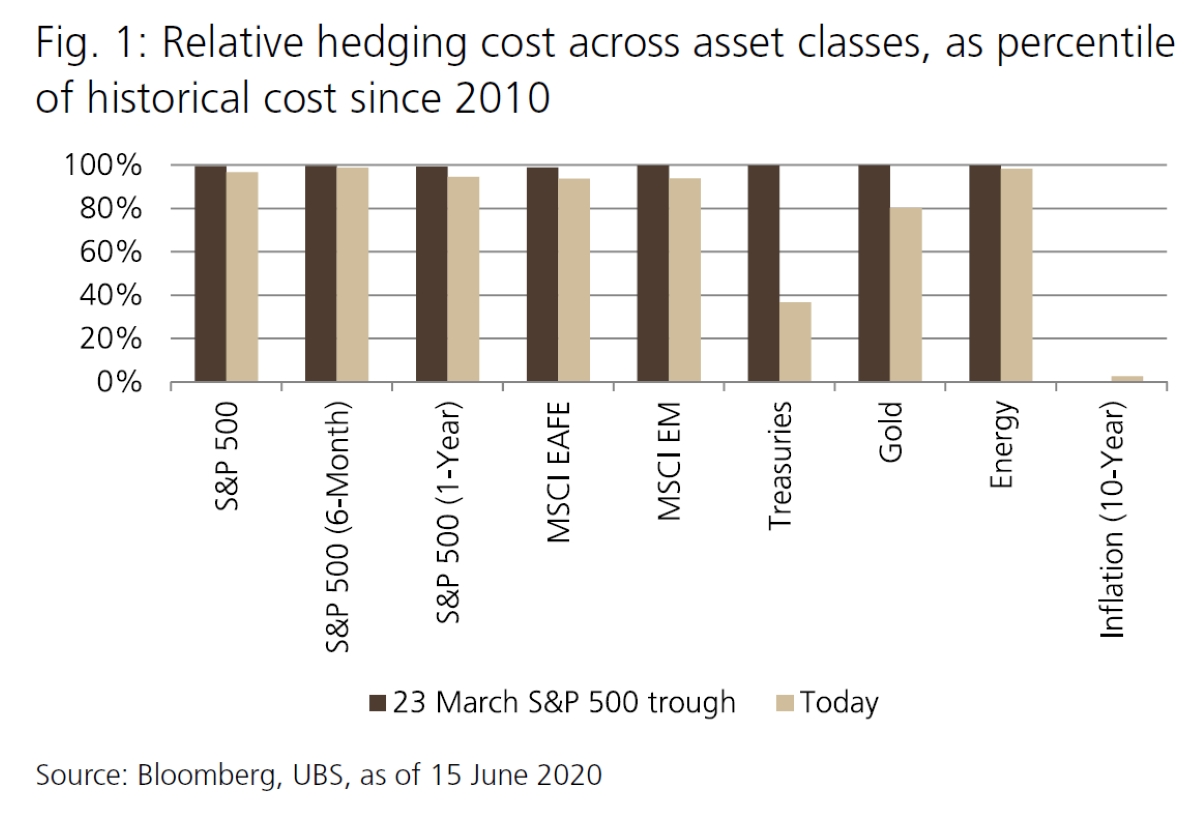

Finance
What Is Hedging In Communication?
Published: January 15, 2024
Learn the fundamentals of hedging in communication, a vital concept in finance. Understand how it helps mitigate risks and enhances financial strategies.
(Many of the links in this article redirect to a specific reviewed product. Your purchase of these products through affiliate links helps to generate commission for LiveWell, at no extra cost. Learn more)
Table of Contents
Introduction
In the realm of communication, individuals often encounter situations where expressing ideas or opinions in a direct, unequivocal manner may not be appropriate or effective. This is where the concept of hedging comes into play. Hedging refers to the use of language or communication techniques that allow individuals to soften or moderate their statements to convey a sense of uncertainty or to avoid appearing too assertive.
Hedging in communication is a valuable skill that can foster effective, nuanced dialogue and help build rapport with both individuals and larger audiences. It enables speakers and writers to navigate complex social and professional situations, while creating space for alternative viewpoints and minimizing potential conflicts. By employing hedging techniques, individuals can communicate with tact, humility, and empathy.
While hedging may seem counterintuitive to assertive communication, it serves a crucial purpose in various contexts. It can be particularly crucial in professional settings, such as business negotiations, presentations, or academic discussions, where precise and diplomatic language is key. Hedging allows individuals to express their thoughts and opinions without sounding overly forceful or appearing to disregard the viewpoints of others.
The art of hedging lies in striking a balance between expressing one’s ideas and maintaining a cooperative and respectful communication style. It requires individuals to carefully choose their words, tone, and phrasing to convey shades of meaning or to acknowledge the possibility of different interpretations.
In the following sections, we will explore the different types of hedging techniques, provide examples of how hedging can be employed in communication, discuss the benefits and drawbacks of using hedging, and offer practical tips for effective hedging.
By understanding and mastering the art of hedging, individuals can navigate communication challenges with finesse and achieve more productive and harmonious interactions in both personal and professional settings.
Definition of Hedging
Hedging, in the context of communication, refers to the strategic use of language and communication techniques to convey a sense of uncertainty, moderation, or diplomatic ambiguity. It involves the conscious choice of words, tone, and phrasing to soften statements, indicate alternative perspectives, or express openness to different interpretations. The goal of hedging is to avoid sounding too assertive, minimizing potential conflicts, and fostering a cooperative and inclusive communication environment.
Hedging can be seen as a linguistic tool for managing interpersonal dynamics and navigating complex social and professional interactions. It allows individuals to hedge their assertions by incorporating hedging words and phrases that signal caution, qualify statements, or express a degree of uncertainty. The use of hedging techniques can help individuals navigate delicate situations where directness might be perceived as confrontational or impolite.
It is important to note that while hedging involves tempering the certainty of one’s statements, it does not imply dishonesty or insincerity. Rather, it reflects an understanding of the nuanced nature of communication and a desire to create space for differing perspectives and interpretations.
One common example of hedging is the use of modal verbs such as “may,” “might,” and “could.” These verbs convey a sense of possibility or probability rather than certainty. For instance, instead of saying, “This is the best solution,” a hedged statement may appear as, “This solution may be worth considering.” This approach acknowledges the potential for other valid viewpoints and invites discussion without imposing one’s own perspective.
Hedging can also involve the use of hedge words or phrases, such as “perhaps,” “possibly,” “in my opinion,” or “to some extent.” These qualifiers soften the impact of statements and allow for a more nuanced expression of ideas. Additionally, including phrases like “it could be argued that” or “some studies suggest” further emphasize the open-ended nature of the discussion and encourage others to contribute their viewpoints.
Hedging is a skill that requires careful thought and consideration. It involves striking a balance between expressing one’s thoughts and opinions while demonstrating respect for diverse perspectives. Mastering the art of hedging can lead to more effective communication, fostering understanding, collaboration, and a harmonious exchange of ideas.
Purpose of Hedging in Communication
Hedging serves several important purposes in communication. Understanding these purposes can help individuals harness the power of hedging techniques to navigate various social and professional interactions effectively.
1. Soften Statements: One of the primary purposes of hedging is to soften statements and convey a sense of modesty or uncertainty. By using hedge words like “might,” “could,” or “perhaps,” individuals can temper the assertiveness of their statements, making them more palatable and open to discussion. This softening effect helps to maintain a more respectful and cooperative communication environment.
2. Show Humility and Respect: Hedging allows individuals to demonstrate humility and respect for the viewpoints and expertise of others. By acknowledging the possibility of alternative perspectives or interpretations, individuals can foster a sense of inclusivity and encourage collaborative discussions. This approach helps to prevent misunderstandings, build trust, and foster a spirit of cooperation.
3. Maintain Diplomacy: In professional settings, such as business negotiations or academic debates, hedging can be vital for maintaining diplomatic and tactful communication. By employing hedging techniques, individuals can express their thoughts or concerns without appearing overly forceful or dismissive of others’ opinions. This diplomatic approach can help to preserve relationships and avoid unnecessary conflicts.
4. Create Space for Discussion: Hedging allows individuals to create space for further discussion and exploration of ideas. By using phrases like “it could be argued that” or “to some extent,” individuals invite others to express their thoughts and contribute to the conversation. This inclusive approach fosters a collaborative and expansive dialogue where multiple viewpoints are considered and respected.
5. Enhance Clarity and Precision: While hedging may introduce a level of uncertainty, it can also enhance the clarity and precision of communication. By using hedge words or phrases, individuals can qualify their statements, indicating specific conditions or limitations that may apply. This precision helps to ensure that the intended message is conveyed accurately and minimizes the potential for misinterpretation.
Overall, the purpose of hedging in communication is to achieve effective and nuanced dialogue. It allows individuals to express themselves while considering the perspectives of others, maintaining diplomacy, and fostering an inclusive environment. By mastering the art of hedging, individuals can navigate complex social and professional interactions with finesse, ensuring that their messages are received with respect and promoting productive conversations.
Types of Hedging Techniques
There are various hedging techniques that individuals can employ to convey uncertainty or moderation in their communication. These techniques help to balance assertiveness with diplomacy, fostering effective dialogue and respecting the perspectives of others. Here are some common types of hedging techniques:
1. Modal Verbs: Modal verbs such as “may,” “might,” “could,” and “would” are commonly used to indicate possibility or probability. They allow individuals to qualify their statements, indicating that their assertions are not absolute truths but rather potential considerations.
2. Hedge words and phrases: Hedge words like “perhaps,” “possibly,” “likely,” or phrases such as “in my opinion” or “to some extent” can be used to soften the impact of statements. These qualifiers signal a degree of uncertainty or subjectivity, indicating that the speaker is open to alternative viewpoints or interpretations.
3. Conditional statements: By using conditional statements, individuals can express their ideas in a more conditional or contingent manner. Phrases such as “If X happens, then Y might be a possibility” or “Under certain circumstances, this approach could prove effective” allow for flexibility and acknowledge that the validity of the statement depends on specific conditions or factors.
4. Approximations and generalizations: Employing approximations or generalizations is another way to hedge in communication. Instead of making precise claims, individuals can use phrases like “approximately,” “generally speaking,” or “on average” to convey that their statements are broad estimations rather than exact facts.
5. Hedging through questions: Asking questions is a subtle yet effective way to hedge statements. By framing a statement as a question, individuals can suggest alternative possibilities or invite others to share their thoughts. For example, instead of saying “This is the best solution,” one could ask, “Could this be a potential solution?” This approach encourages dialogue and demonstrates openness to different perspectives.
6. Hedging through hedging tags: Hedging tags are additional phrases that can be added at the end of a sentence to qualify or moderate the statement. Examples of hedging tags include “sort of,” “kind of,” “in a way,” or “to some degree.” These tags indicate a level of uncertainty or variation in the message being conveyed.
It’s important to note that the choice and effectiveness of hedging techniques may vary depending on the context and the intended audience. Individuals should consider the specific dynamics of the communication situation and tailor their hedging techniques accordingly.
By employing these hedging techniques thoughtfully and skillfully, individuals can strike a balance between assertiveness and diplomacy, fostering effective communication that encourages discussion, respect, and collaboration.
Examples of Hedging in Communication
To better understand how hedging techniques can be applied in communication, let’s explore some examples:
1. Using modal verbs: Instead of saying, “This is the only solution,” a hedged statement may be, “This could be a possible solution.” By using the modal verb “could,” the speaker acknowledges that there may be other valid alternatives.
2. Employing hedge words: Instead of stating, “I am certain about this,” a hedged statement could be, “I am somewhat confident about this.” The use of the hedge word “somewhat” indicates a degree of uncertainty and allows for the possibility of different viewpoints.
3. Using conditional statements: Instead of making a definitive statement like, “This will always work,” a hedged statement might look like, “If certain conditions are met, this approach may lead to positive outcomes.” The use of the conditional phrase “if certain conditions are met” acknowledges that the statement is contingent on specific circumstances.
4. Approximations and generalizations: Instead of stating, “This will save you exactly 50%,” a hedged statement would be, “This could potentially save you around 50%.” By using the approximation “around,” the speaker acknowledges that the exact savings may vary.
5. Hedging through questions: Instead of asserting, “I have the perfect solution,” a hedged statement might be, “Could this be a potential solution?” By framing it as a question, the speaker invites others to provide their opinions and considers alternative possibilities.
6. Using hedging tags: Instead of saying, “I am certain about this, in every way,” a hedged statement could be, “I am quite confident about this, to some degree.” The inclusion of the hedging tag “to some degree” acknowledges that there is a level of uncertainty or variation in the speaker’s confidence.
These examples demonstrate how hedging can be used to express ideas and opinions in a more flexible and inclusive manner. By incorporating hedging techniques, individuals can navigate conversations without appearing overly assertive or dismissive of alternative viewpoints.
It is important to note that the effectiveness and appropriateness of these examples may vary depending on the specific context and audience. It is crucial to consider the dynamics of each communication situation and adapt the use of hedging techniques accordingly.
Hedging is a valuable skill that can foster constructive dialogue, allow for diverse perspectives, and encourage collaboration. By employing these techniques, individuals can navigate complex conversations and interactions with tact and respect.
Benefits and Drawbacks of Hedging
Hedging in communication offers several benefits, but it also has potential drawbacks. Understanding both sides of the equation is crucial for effective and intentional use of hedging techniques. Let’s explore the benefits and drawbacks:
Benefits:
1. Enhances Diplomacy: Hedging allows individuals to express their thoughts and opinions while maintaining a diplomatic tone. It enables individuals to present ideas without coming across as forceful or dismissive of others’ perspectives. This fosters a respectful and cooperative communication environment.
2. Encourages Dialogue: By incorporating hedging techniques, individuals invite others to contribute to the conversation. The use of hedge words and phrases or posing questions helps create space for different viewpoints and encourages collaborative discussions. Hedging facilitates an inclusive dialogue that promotes mutual understanding and constructive exchanges of ideas.
3. Minimizes Conflict: Hedging can help prevent unnecessary conflicts or misunderstandings. By expressing a level of uncertainty or acknowledging alternative possibilities, individuals can avoid sounding overly absolute or confrontational. This allows for smoother communication, as it reduces the chances of others feeling defensive or resistant to different viewpoints.
4. Builds Rapport: By employing hedging techniques, individuals demonstrate respect for the expertise and perspectives of others. This fosters a sense of rapport and trust, as it shows a willingness to consider various viewpoints. Hedging contributes to building positive relationships and effective collaboration.
Drawbacks:
1. Potential Lack of Assertiveness: While hedging is useful for maintaining diplomacy, it can sometimes lead to a lack of assertiveness. Overuse or misuse of hedging techniques may dilute the intended message, making it less impactful. It is essential to strike a balance between hedging and expressing oneself with clarity and conviction.
2. Risk of Misinterpretation: Hedging introduces a level of ambiguity, and this can sometimes lead to misinterpretation. The carefully chosen hedge words or phrases may not effectively convey the intended meaning, causing confusion among listeners or readers. Therefore, individuals should be mindful of the context and audience and ensure that their hedging is clear and coherent.
3. Potential Overreliance on Hedging: In some cases, individuals may rely too heavily on hedging, which can undermine the effectiveness of their communication. Overuse of hedge words or phrases may lead to a lack of confidence or credibility in the statements being made. It is important to strike a balance and use hedging techniques judiciously to maintain a strong presence in communication.
4. Cultural Considerations: Hedging techniques may vary in their appropriateness across different cultures or contexts. Some cultures prefer direct communication styles while others value subtle and indirect approaches. It is important to be aware of cultural nuances and adapt hedging techniques accordingly to ensure effective cross-cultural communication.
By understanding the benefits and potential drawbacks of hedging, individuals can navigate their communication with intention and skill. Striking the right balance between assertiveness and diplomacy is key to effective communication that promotes collaboration, understanding, and constructive dialogue.
Practical Tips for Effective Hedging in Communication
Mastering the art of hedging requires practice and skill. Here are some practical tips to help you effectively incorporate hedging techniques into your communication:
1. Understand the Context: Consider the specific context and audience of your communication. Tailor your hedging techniques accordingly to ensure they are appropriate and effective. Different situations may call for varying levels of assertiveness or diplomacy.
2. Use Hedging Techniques Mindfully: Be intentional with the use of hedging techniques. Consider the impact that different hedge words, phrases, or modal verbs may have on your message. Ensure that your hedging is clear and coherent, avoiding excessive use that may dilute the effectiveness of your communication.
3. Strike a Balance: Find the right balance between assertiveness and diplomacy. While hedging is valuable for maintaining tactfulness, ensure that your statements are still confidently and clearly expressed. Aim for a balanced approach that acknowledges alternative perspectives without compromising the strength of your message.
4. Adapt to Audience Preferences: Understand the communication style preferred by your audience or individuals you are interacting with. Some may appreciate more direct expressions, while others may respond better to hedged statements. Adapt your hedging techniques to match the preferences and expectations of your audience.
5. Practice Active Listening: Effective hedging involves active listening and a genuine openness to different viewpoints. Engage in active dialogue, actively seek input from others, and use hedging techniques to indicate that you value and respect their perspectives. This fosters a collaborative and inclusive communication environment.
6. Be Aware of Cultural Nuances: Cultural norms and expectations regarding directness and hedging can vary. Be mindful of the cultural background of your audience to ensure that your hedging techniques are appropriate and well-received. Adapt your approach to align with cultural nuances, facilitating effective cross-cultural communication.
7. Seek Feedback: Regularly seek feedback from trusted colleagues or mentors on your communication style. They can provide insights into how your hedging techniques come across and offer suggestions for improvement. Continuous feedback and reflection will help you refine your hedging skills and strengthen your communication effectiveness.
8. Practice, Practice, Practice: Effective communication, including hedging, is a skill that improves with practice. Actively work on incorporating hedging techniques into your daily conversations, presentations, or written communication. This ongoing practice will help you become more confident and proficient in using hedging techniques effectively.
Remember that effective hedging is about fostering respectful and inclusive communication. By mastering the art of hedging, you can navigate complex social and professional interactions with finesse, promoting understanding, collaboration, and productive exchanges of ideas.
Conclusion
Hedging is a valuable skill in communication that allows individuals to navigate complex social and professional interactions with finesse and diplomacy. By using hedging techniques, individuals can soften their statements, invite discussion, and demonstrate respect for different viewpoints. Effective hedging strikes a balance between assertiveness and diplomacy, fostering an inclusive and collaborative communication environment.
The use of hedging offers numerous benefits. It enhances diplomacy, encourages dialogue, and minimizes conflict by allowing individuals to express their thoughts and opinions while considering the perspectives of others. Hedging also builds rapport and trust, as it shows a willingness to acknowledge alternative possibilities and respect diverse viewpoints.
However, it is important to be mindful of potential drawbacks. Overreliance on hedging may lead to a lack of assertiveness or clarity in communication. Misinterpretation is a possibility if hedging is not used effectively or if the intended meaning is not clear. Additionally, cultural considerations should be kept in mind to ensure that hedging techniques are appropriate and well-received in different contexts.
To effectively incorporate hedging into communication, it is crucial to understand the context, adapt to audience preferences, and use hedging techniques mindfully. Striking the right balance between assertiveness and diplomacy is key, while actively listening to others and seeking feedback can further enhance communication effectiveness.
In conclusion, mastering the art of hedging allows individuals to express themselves confidently while maintaining diplomacy and promoting positive interactions. By employing hedging techniques thoughtfully and skillfully, individuals can foster understanding, collaboration, and a harmonious exchange of ideas in both personal and professional realms.














